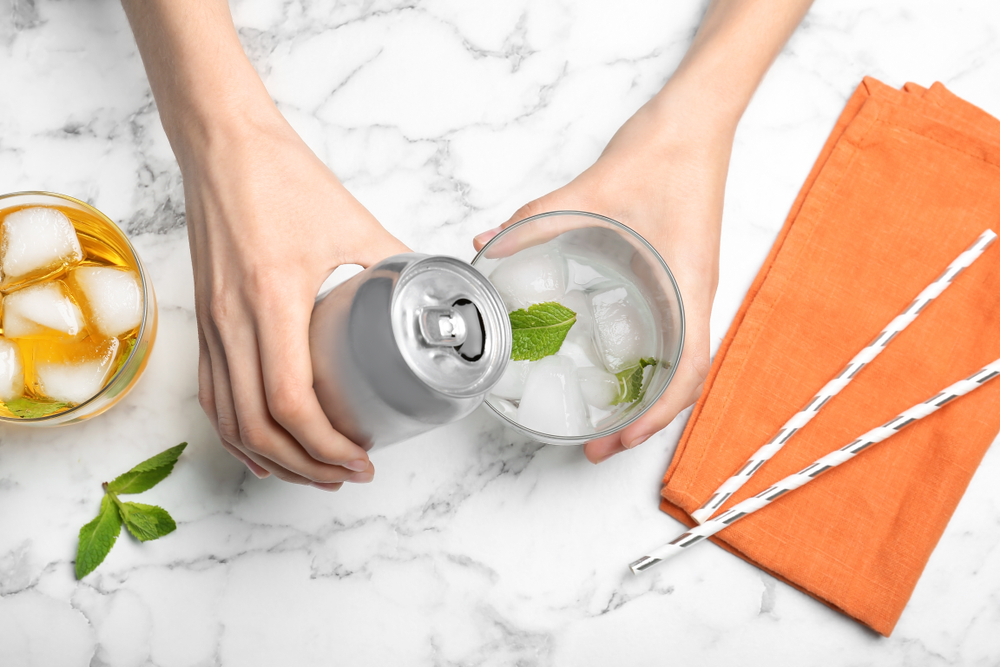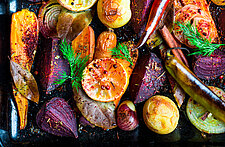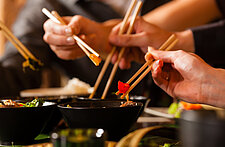Consumers’ buying habits and consumption of alcohol at home has remained strong throughout the entire pandemic as bars and restaurants have had to temporarily shutter.
At the start of the pandemic in March, sales of alcoholic beverages rose 55%. Spirits had the highest increase with sales up 75%, followed by wine at 66% and beer at 42%, compared to the same period in 2019.
Thirsty for more? Subscribe to our Weekly Newsletter - CLICK HERE!
Not only were consumers drinking more, they were spending more, too. Alcohol delivery apps reported sales shooting up about 300% from earlier this year, with consumers spending 25-50% more per purchase in March. From March to May, Bloomberg reported tequila and gin were the top sellers for spirits, cans of pre-mixed or “ready to drink” (RTD) cocktails right behind them in a close third.
After the initial craze of spiked seltzers, it is no coincidence that the resurgence of the canned cocktail coincides with the coronavirus lockdown. Between ease of drinking, a wide range of flavors and formats, affordability and cleaner labels, there’s a lot to love about popping open a can of a refreshingly fruity cocktail while toasting friends on a Zoom chat for happy hour. Flavor Trends: Classic vs Contemporary
Flavor Trends: Classic vs Contemporary
Flavors within canned cocktails fall largely into two categories; classic or innovative.
Classic flavors also happen to be the most common, these include lime, lemonade, and other bright fruits – especially peach and strawberry – and canned sangrias that pair well with warmer weather. Convenience also plays a role; you can now indulge in a familiar margarita, but hold the salt rim. It’s simple to enjoy a mojito without having to muddle mint leaves. You can even find a Moscow Mule in an aluminum can, no copper cup needed. Consumers know to look out for these classic, go-to flavors and gravitate towards them for their established relaxing, summertime-vibe.
While the classics are well, classic, consumers are also interested in what’s new and interesting, leading producers to get creative with canned cocktails. Brands are looking around the world for inspiration—launching flavor forward sparkling tequila cocktails made with high end Mexican tequila or taking a cue from Italy and launching sparkling wine spritzers.
Canned spritzers are leveraging more intriguing fruit flavors like blood orange, mango, apricot, rose and raspberry. Other brands are looking to the mixology world; releasing beverages that match fruit and botanicals like grapefruit and rosemary or strawberry and basil to create high-end flavor combinations. Even lemonade is being elevated with blueberries and mint, all served in a sleek, vintage-looking can.
RELATED: COVID-19's Impact on Alcoholic Beverage Categories
A Healthy Alternative in a Can
When canned spiked seltzer was first introduced, it had the advantage of riding the coattails of the popularity of non-alcoholic sparkling water already associated as a low-calorie alternative to soda. According to Mintel, 36% of adults say sparkling water is a good alternative to alcohol as they cut back, making carbonated canned drinks a great transition beverage. As the canned cocktail and mixer category evolves beyond just hard seltzer, many products still carry the low-cal label, which is a huge pull for Millennials who as a cohort are generally more health conscious than previous generations. These consumers are sold on the zero-sugar, gluten-free, guilt-free drink that fits in with their lifestyle while also delivering on both flavor and value.  Gen Z and Millennials are drinking less than previous generations, too. These ready to drink beverages appeal to those cutting back on alcohol consumption and looking for less heavy, lower ABV drinks.
Gen Z and Millennials are drinking less than previous generations, too. These ready to drink beverages appeal to those cutting back on alcohol consumption and looking for less heavy, lower ABV drinks.
Many existing hard seltzers, spritzers, and cocktails fall in a range of 4%-7% ABV per can, much lower than wine (12-15%) and traditional cocktails (12%-40% ABV).
The base of many these fizzy cocktails is carbonated water and malt liquor, allowing for a much lighter, easily consumable drink without the fear of the heavy feeling and extra calories of a traditional canned beer. Others rely on traditional spirits to provide their alcoholic kick. Additional, some products like hard kombucha and hard teas adopt a general health halo from their non-alcoholic counterparts to appeal to the health-conscious consumer, who associates those beverages the probiotics and general wellness.
At-Home Premium Cocktail Experience
The nationwide Coronavirus lockdown and safety measures installed with bars and restaurants shutting down while people sheltered in place made for the perfect conditions for canned cocktails to have a 2nd wave.
The value of canned cocktails is another driving force in their popularity. While a craft cocktail may cost between $10-$15, canned cocktails can retail much closer to $2-$5 a serving. Canned cocktails help create a premium, at home drinking experience at a great value for those who typically go out to a bar and pay typically high prices for high-end, luxury cocktails. Consumers who crave premium ingredients, flavors, and textures can be satisfied with the similar experience provided by fizzy canned drinks boasting both classic cocktails and out-of-the-box flavors.
Even after restrictions are lifted, canned cocktails are poised to continue to rise in popularity as flavors evolve and people crave a high end experience in every sip.
Stay in the loop with flavor, food and beverage with the Weekly In-sight Newsletter!





